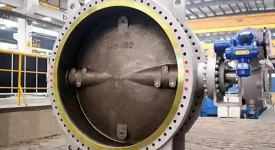Solar power has established itself as a leading source of renewable energy, offering clean and sustainable electricity generation. While traditional silicon-based solar panels are widely used, thin-film solar panels have gained attention as a lightweight and flexible alternative. In this article, we will explore the world of thin-film solar panels, understand their unique characteristics, and discuss their applications, advantages, and limitations.
What Are Thin-Film Solar Panels?
Thin-film solar panels, as the name suggests, are solar cells that are manufactured with thin layers of semiconductor materials. Unlike traditional crystalline silicon solar panels, which are relatively rigid and bulky, thin-film solar panels are lightweight, flexible, and often more adaptable to various surfaces. Thin-film solar technology has been in development for several decades and continues to evolve, offering an exciting alternative in the solar energy landscape.
Types of Thin-Film Solar Technologies
Several types of thin-film solar technologies exist, each utilizing different semiconductor materials. The most common types include:
- Amorphous Silicon (a-Si): Amorphous silicon is one of the earliest and most established thin-film technologies. It consists of non-crystalline silicon and is often used in consumer electronics, small-scale applications, and building-integrated solar products.
- Cadmium Telluride (CdTe): CdTe thin-film solar panels are known for their cost-effectiveness and commercial viability. They have been widely adopted for utility-scale solar installations and offer high conversion efficiency.
- Copper Indium Gallium Selenide (CIGS): CIGS thin-film solar panels are known for their efficiency and flexibility. They can be incorporated into various applications, including flexible solar panels, portable chargers, and building-integrated photovoltaics (BIPV).
- Organic Photovoltaic (OPV): Organic thin-film solar panels are made from organic (carbon-based) materials. They are lightweight, flexible, and have the potential to be integrated into unconventional surfaces and products.
Advantages of Thin-Film Solar Panels
- Lightweight and Flexible: One of the most significant advantages of thin-film solar panels is their lightweight and flexible nature. They are suitable for installations on irregular or curved surfaces, such as roofs, facades, and vehicles.
- Cost-Effective Manufacturing: Thin-film solar panels can be manufactured using low-cost processes, making them a cost-effective alternative to traditional crystalline silicon panels. This cost advantage can translate into more accessible solar energy solutions.
- Better Low-Light Performance: Thin-film solar panels often have better low-light performance compared to crystalline silicon panels. They can generate electricity even in cloudy or shaded conditions, making them suitable for regions with variable weather.
- Versatile Applications: Thin-film solar technology allows for versatile applications, such as solar-integrated roofing materials, solar-powered wearable devices, and portable solar chargers. Their adaptability opens up a wide range of possibilities for integrating solar power into everyday products.
- Higher Temperature Tolerance: Thin-film solar panels tend to have a higher temperature tolerance than traditional panels. They can maintain their efficiency at elevated temperatures, which can be advantageous in hot climates.
- Rapid Energy Payback: The manufacturing process of thin-film solar panels typically has a faster energy payback period compared to traditional panels. This means that they can recoup the energy used in their production more quickly.
Limitations and Challenges
While thin-film solar panels offer various advantages, they also come with limitations and challenges:
- Lower Efficiency: Thin-film solar panels generally have lower conversion efficiencies compared to crystalline silicon panels. This means that they may require more space to generate the same amount of electricity.
- Degradation Rate: Some thin-film technologies, particularly amorphous silicon, tend to degrade faster over time compared to crystalline silicon panels. This can impact their long-term performance and lifespan.
- Materials and Environmental Concerns: Certain thin-film technologies, such as cadmium telluride (CdTe), contain materials of concern, which can raise environmental and disposal issues. Proper recycling and disposal practices are essential.
- Limited Lifespan: The longevity of thin-film solar panels can vary depending on the technology used. It is important to consider the expected lifespan when choosing thin-film panels for an installation.
- Efficiency Loss with Bending: While flexibility is a significant advantage, bending thin-film solar panels too frequently can lead to efficiency loss over time. Careful handling is necessary to maintain performance.
Applications of Thin-Film Solar Panels
Thin-film solar panels find applications in various industries and sectors, thanks to their flexibility and versatility:
- Building-Integrated Photovoltaics (BIPV): Thin-film solar panels can be seamlessly integrated into building materials, such as roofing, windows, and facades. This allows for the generation of solar power without compromising the architectural design.
- Portable Solar Chargers: Thin-film solar chargers are lightweight and flexible, making them ideal for portable charging solutions for outdoor activities, camping, and emergency power needs.
- Solar Vehicles: Electric vehicles (EVs) and solar-powered cars often use thin-film solar panels to charge auxiliary batteries or extend the vehicle’s range.
- Consumer Electronics: Thin-film solar panels can be integrated into small electronic devices, such as solar-powered calculators, phone chargers, and wearables.
- Remote and Off-Grid Applications: Thin-film solar panels are suitable for remote and off-grid applications, such as powering remote sensors, communication equipment, and isolated installations.
- Utility-Scale Solar Farms: While most commonly associated with small-scale applications, certain thin-film technologies, like cadmium telluride (CdTe), have been successfully deployed in utility-scale solar farms.
Conclusion
Thin-film solar panels offer a lightweight, flexible, and versatile alternative to traditional crystalline silicon panels. Their unique characteristics make them well-suited for various applications, from building-integrated photovoltaics to portable solar chargers and solar-powered vehicles. While they may have lower efficiency compared to crystalline silicon panels, their cost-effectiveness and adaptability have earned them a place in the solar energy landscape. As technology continues to advance, thin-film solar panels are likely to play an increasingly important role in expanding the use of solar power in diverse industries and everyday products.






